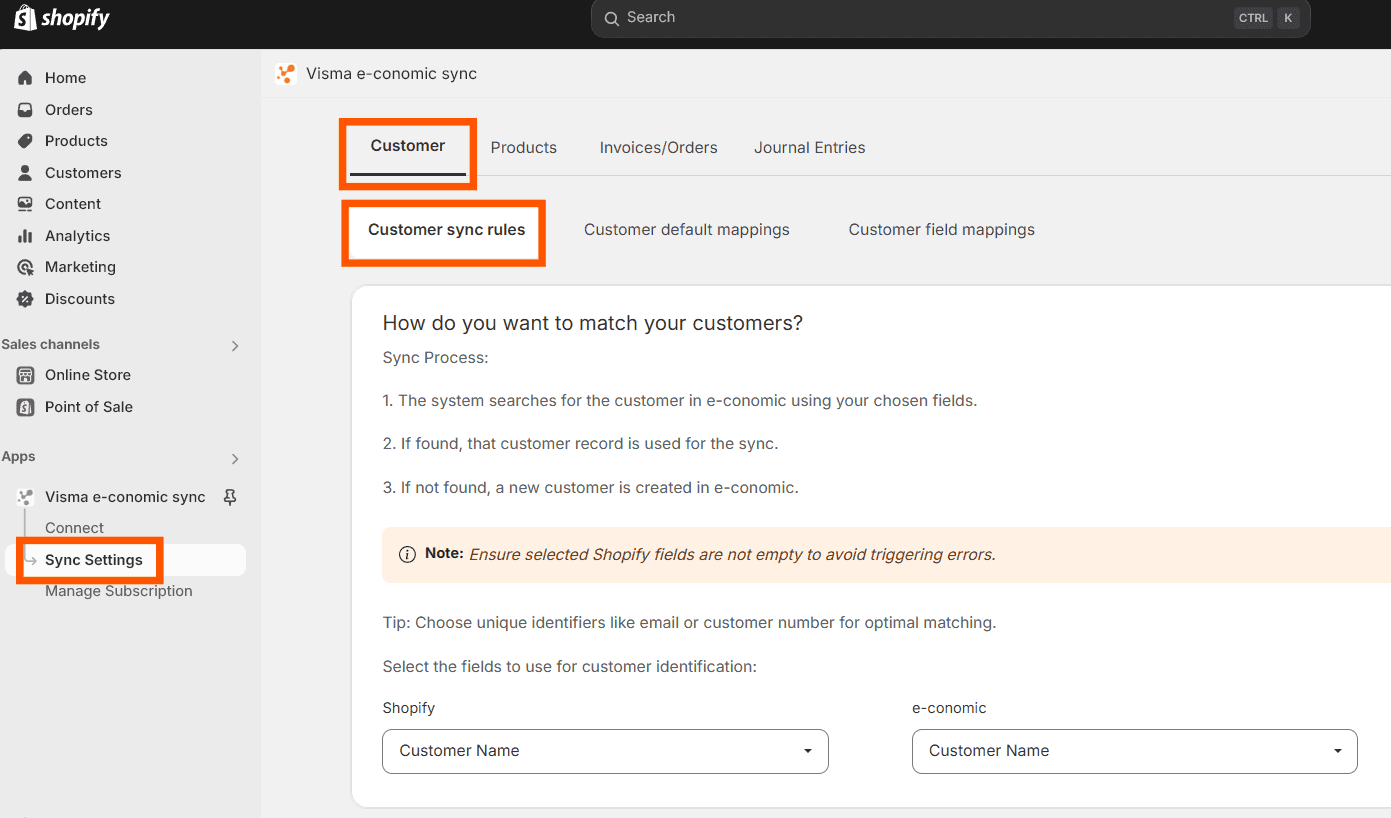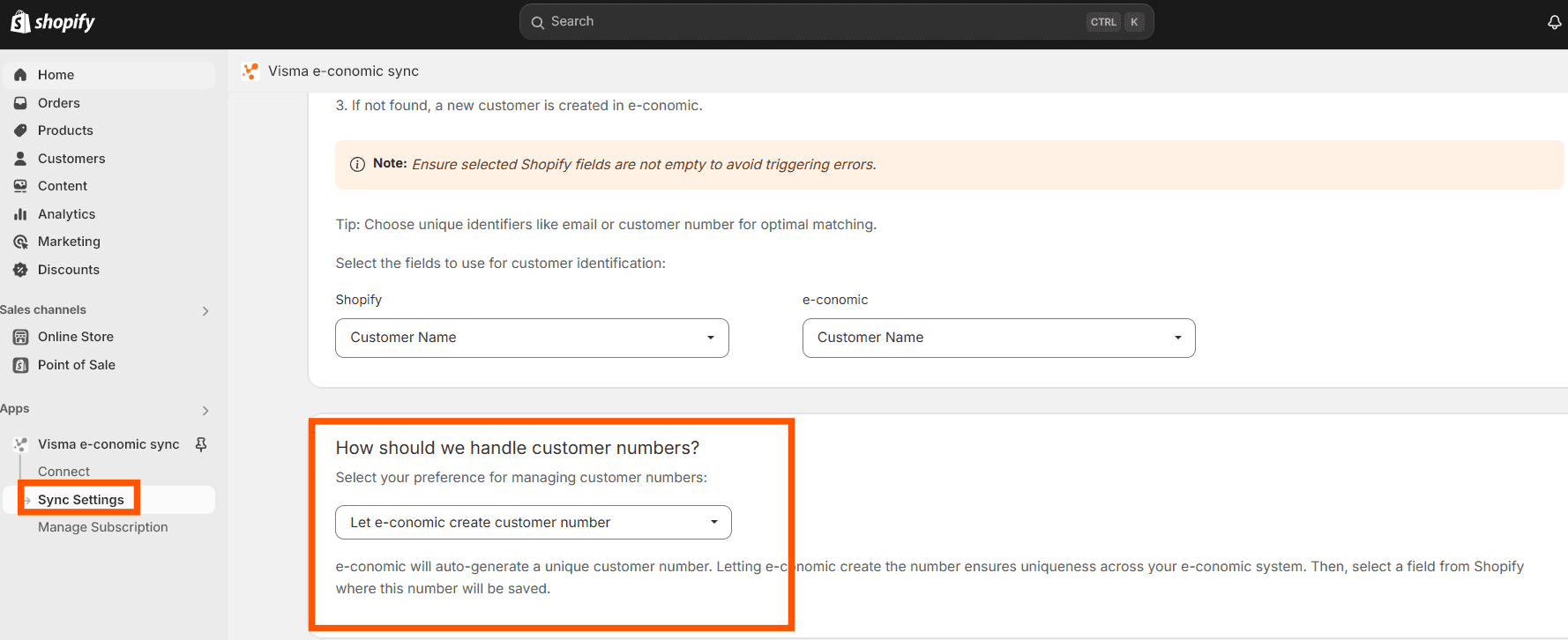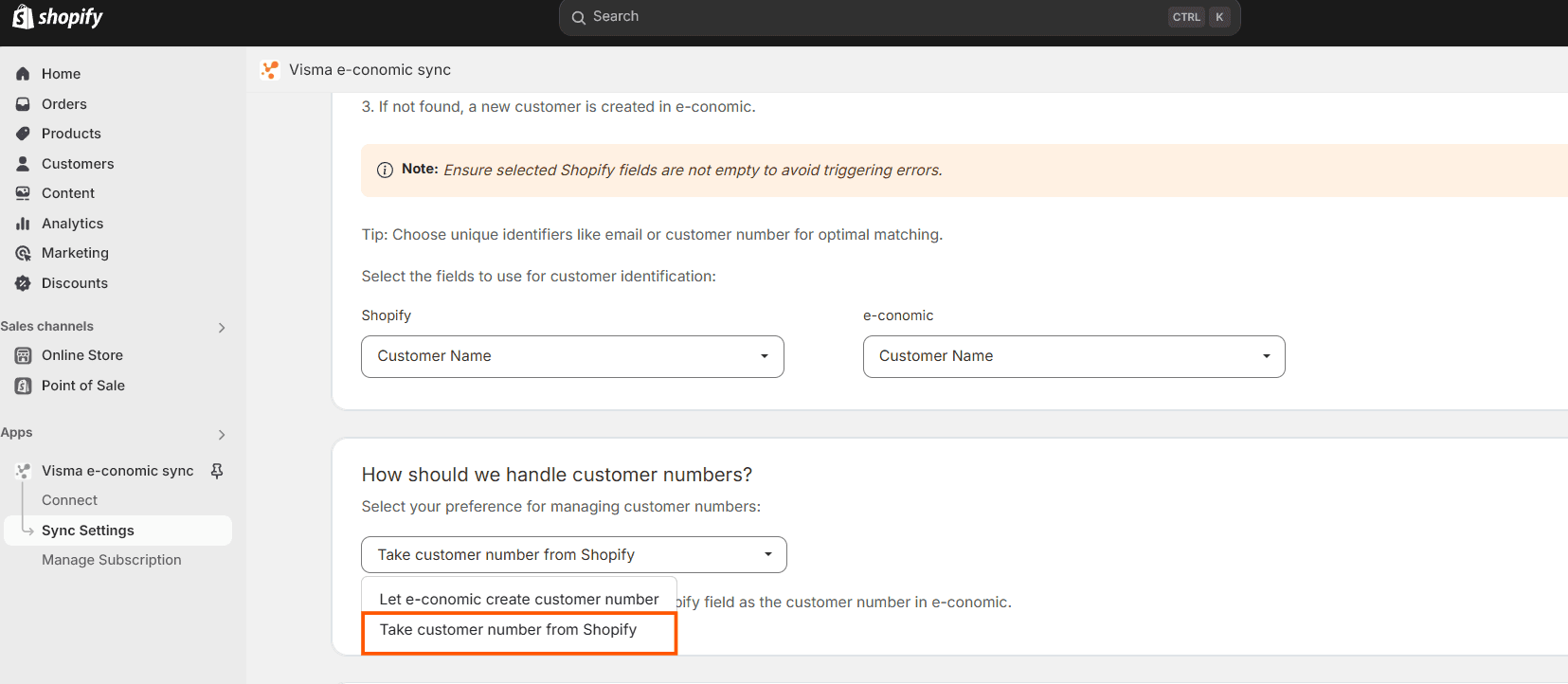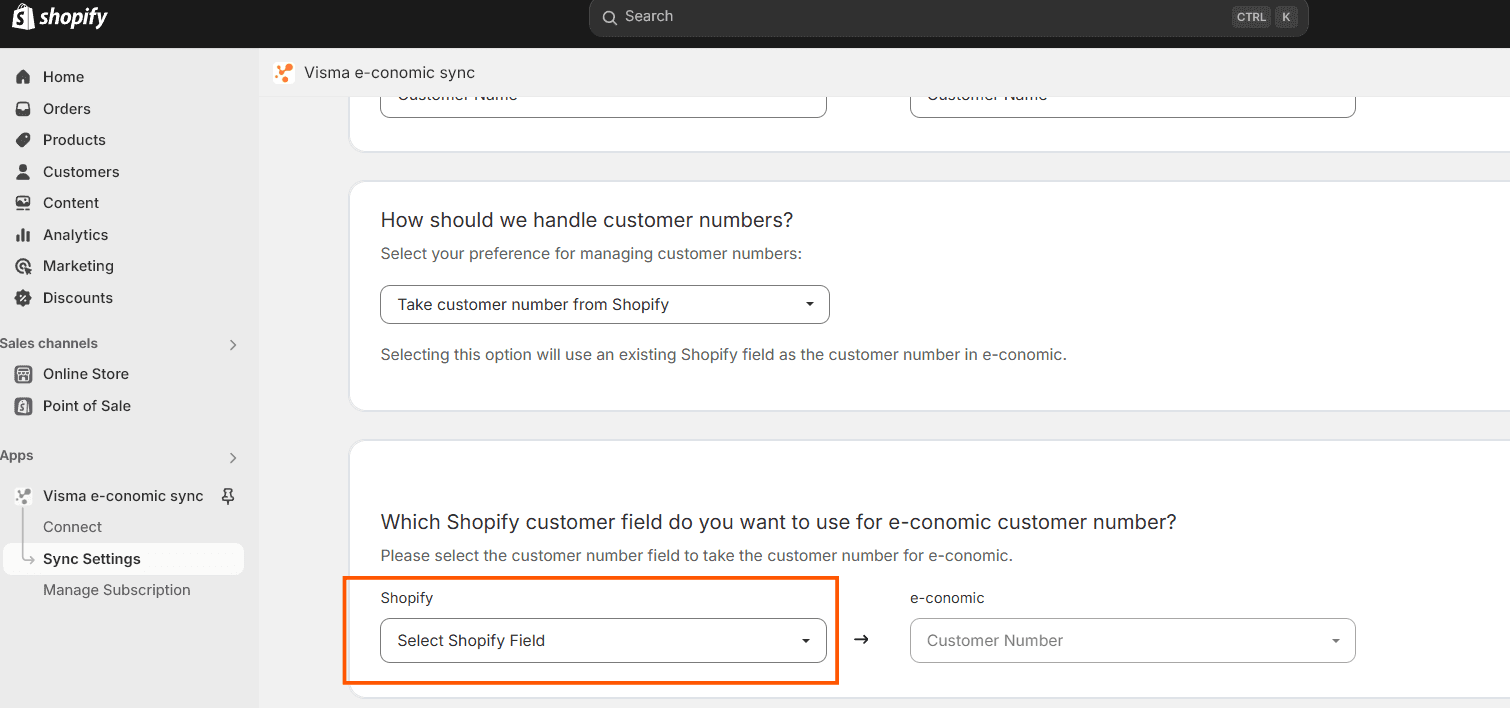
Support
Help Center
Welcome to the Help Center! This site will get you up and running with Info in under 5 minutes.
Installation
Gettting the Most Out of the App
Customer Sync
Customer Sync Settings Explained
Why Customer Sync Matters
Customer synchronization ensures that your customer data remains consistent across both Shopify and e-conomic. This alignment is crucial for:
Accurate invoice generation
Consistent customer communication
Proper financial tracking
Streamlined customer service
Customer Matching Configuration Explained
("How do you want to match your customers?")
What It Does
This setting determines how the integration identifies the same customer across both systems. Think of it as teaching the system how to recognize "John Smith" in Shopify is the same person as "John Smith" in e-conomic.
Why it's Important
Prevents duplicate customer records
Ensures accurate financial history
Maintains clean customer database
Enables proper invoice tracking
Choosing the Right Identifier:

Each identifier option has specific use cases:
Email Address (Recommended)
- Pros: Usually unique, rarely changes
- Best for: B2C businesses, online stores
- When to use: Most general cases
Customer Number
- Pros: Completely unique, systematic
- Best for: B2B businesses
- When to use: When you have an existing customer numbering system
Phone Number
- Pros: Generally unique
- Best for: Local businesses
- When to use: When phone is your primary contact method
Customer Name
- Pros: Easy to recognize
- Cons: May not be unique
- When to use: Only for small businesses with few customers
2. Customer Number Management Explained
"Let e-conomic create customer number" (Recommended)

Benefits:
Ensures unique numbering
Follows e-conomic's numbering system
Prevents conflicts
Maintains accounting consistency
Use Shopify Numbers

Benefits:
Maintains existing customer references
Useful when Shopify is your primary system
Better for businesses transitioning from Shopify-only operations
Select relevant Shopify Field for e-conomic customer number
Click on "Save" and move to "Customer Default Mappings"

Default Settings for New Customers Explained:

Why "Customer default mappings" Matter
Default settings serve as your template for new customer creation, ensuring:
Consistency in customer records
Proper accounting categorization
Correct tax handling
Appropriate payment terms
Key terms explained:
Payment Terms
- Defines when and how customers should pay
- Affects cash flow management
- Sets customer expectations
Customer Group:
- Enables segmentation for reporting
- Affects pricing rules
- Influences accounting categorization
VAT Zone
- Ensures proper tax calculation
- Critical for international sales
- Maintains tax compliance